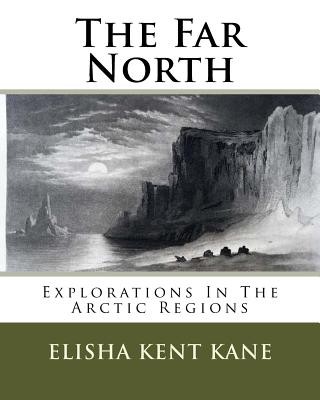
- We will send in 10–14 business days.
- Author: Elisha Kent Kane
- Publisher: CreateSpace Independent Publishing Platform
- ISBN-10: 1536835153
- ISBN-13: 9781536835151
- Format: 20.3 x 25.4 x 0.7 cm, softcover
- Language: English
- SAVE -10% with code: EXTRA
Reviews
Description
In May 1845, Sir John Franklin sailed from England with the ships Erebus and Terror, on an expedition to attempt the discovery of a "North-West Passage," or water communication between the Atlantic and Pacific Oceans, to the North of the American Continent. No intelligence was received from him after the year following. Numerous expeditions were fitted out and despatched in search of Franklin and his brave crew, both from this country and from America. In 1854, Dr Rae returned with information that the Esquimaux had reported having seen the bodies of "forty white men," near Great Fish River, in the spring of 1850. This intelligence was not considered trustworthy, and Lady Franklin fitted out a private expedition, under the command of Captain M'Clintock, who sailed from Aberdeen in the steam-yacht Fox, July 1857. He returned in 1859 with indisputable proofs of the death of Franklin, and the fate of the expedition under his command, -full details of which he afterwards published
- Author: Elisha Kent Kane
- Publisher: CreateSpace Independent Publishing Platform
- ISBN-10: 1536835153
- ISBN-13: 9781536835151
- Format: 20.3 x 25.4 x 0.7 cm, softcover
- Language: English English
In May 1845, Sir John Franklin sailed from England with the ships Erebus and Terror, on an expedition to attempt the discovery of a "North-West Passage," or water communication between the Atlantic and Pacific Oceans, to the North of the American Continent. No intelligence was received from him after the year following. Numerous expeditions were fitted out and despatched in search of Franklin and his brave crew, both from this country and from America. In 1854, Dr Rae returned with information that the Esquimaux had reported having seen the bodies of "forty white men," near Great Fish River, in the spring of 1850. This intelligence was not considered trustworthy, and Lady Franklin fitted out a private expedition, under the command of Captain M'Clintock, who sailed from Aberdeen in the steam-yacht Fox, July 1857. He returned in 1859 with indisputable proofs of the death of Franklin, and the fate of the expedition under his command, -full details of which he afterwards published


Reviews